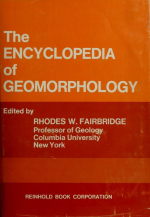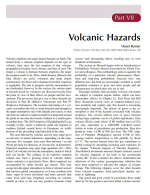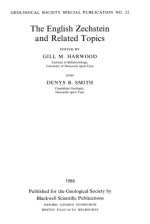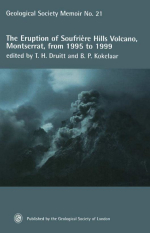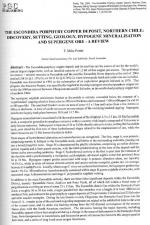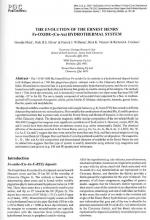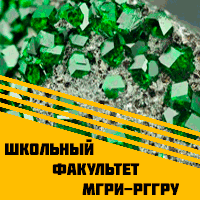El Teniente, located in the Andes of central Chile, is the world's largest known Cu-Mo deposit with estimated resources of >75xl0 tonnes of fine Cu in ore with grades greater than 0.67%. Most of the high-grade hypogene Cu at El Teniente occurs in and surrounding multiple magmatic-hydrothermal breccia pipes. Mineralised breccia complexes, with Cu contents >1%, have vertical extents of >1.5 km, and their roots are as yet unknown. These breccias are hosted in a pervasively biotite-altered and mineralised mafic intrusive complex composed of gabbros, diabases, and porphyrinic basalts and basaltic andesites. The multiple breccias in El Teniente include Cu and sulphide-rich biotite, igneous, tourmaline and anhydrite breccias, and also magnetite and rock-flour breccias. Biotite breccias are surrounded by a dense stockwork of biotite-dominated veins which have produced pervasive biotite alteration and Cu mineralisation characterised by chalcopyrite » bornite + pyrite. Later veins, with various proportions of quartz, anhydrite, sericite, chlorite, tourmaline, feldspars and Cu and Mo sulphide minerals, formed in association with emplacement of younger breccias and felsic porphyry intrusions. These generated sericitic alteration in the upper levels of the deposit, and in some cases contributed more Cu, but in other cases eliminated or redistributed pre-existing mineralisation. Both the Teniente Dacite Porphyry and the central rock-flour Braden Pipe breccia, the dominant litho-structural unit in the deposit, are Cu-poor. Their emplacement at a late stage in the development of the deposit created a relatively barren core, surrounded by a thin (~^i50 m) zone of bornite > chalcopyrite, in the larger main area of chalcopyrite-rich, biotite-altered mafic rocks and mineralised breccias. The small Teniente Dacite Porphyry is not the "productive" pluton responsible for the enormous amount of Cu in the deposit. Instead, the deposition of the large amount of high grade Cu, and other key features of the deposit such as the barren core, are the result of the emplacement of multiple breccias generated by exsolution of magmatic fluids from a large, long-lived, open-system magma chamber cooling and crystallising at >4 km depth below the palaeosurface. It is for this reason that genetically El Teniente, like other giant Miocene and Pliocene Cu deposits in central Chile, is best considered a megabreccia deposit. The multistage emplacement of breccias, alteration and Cu mineralisation at El Teniente spanned a time period of >2 million years, between >7.1 and 4.4 Ma. This occurred at the end of a >10 million year episode of Miocene and Pliocene magmatic activity, just prior to the eastward migration of the Andean magmatic arc as a consequence of decreasing subduction angle due to the subduction of the Juan Fernandez Ridge below central Chile. Ridge subduction and decreasing subduction angle also caused crustal thickening, uplift and erosion, resulting in telescoping of the various breccias and felsic intrusions in the deposit. El Teniente is located at the intersection of major Andean structures, which focused magmatic activity and mineralisation at this one locality for an extended period of time.



